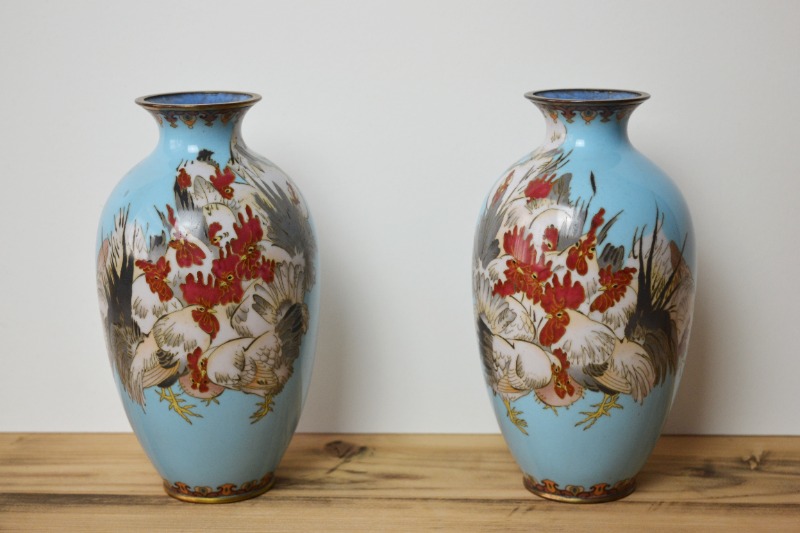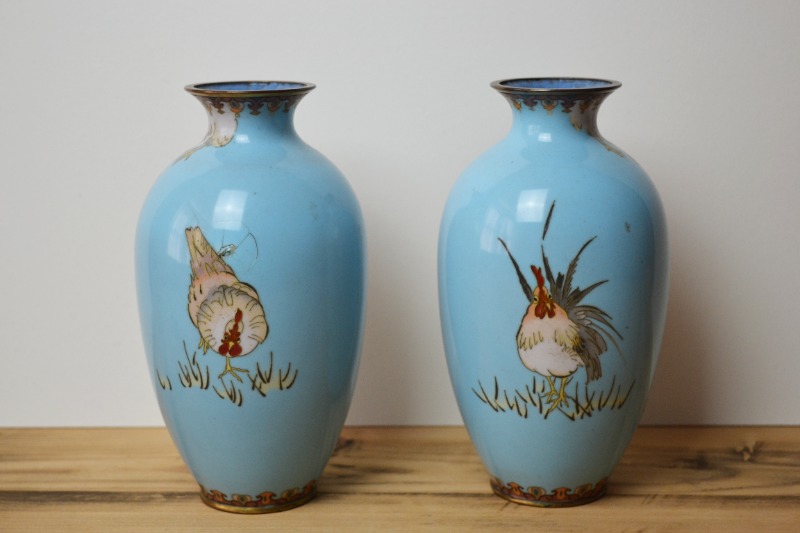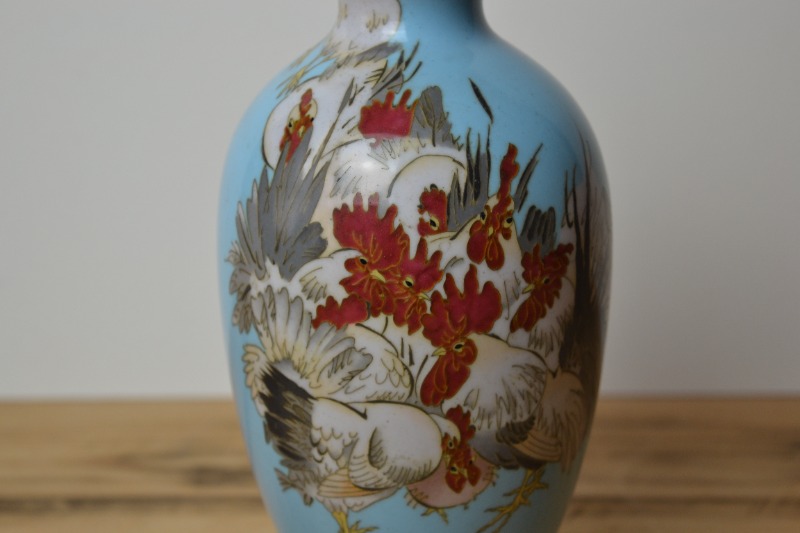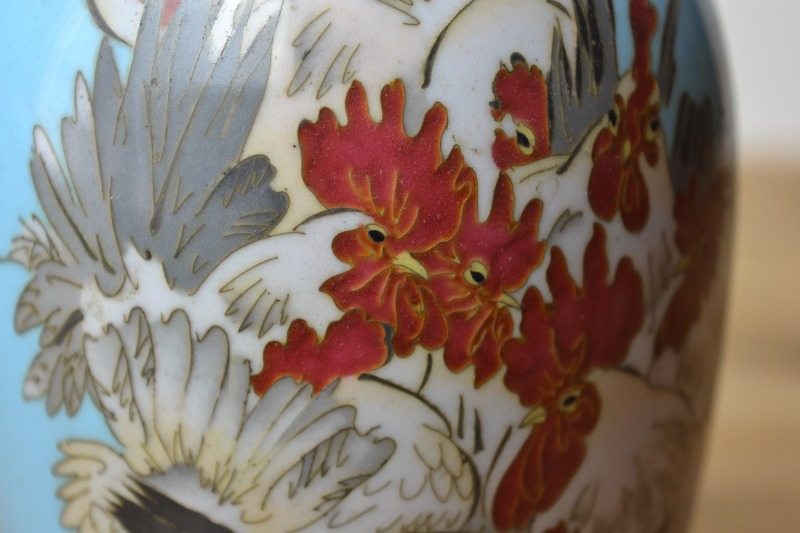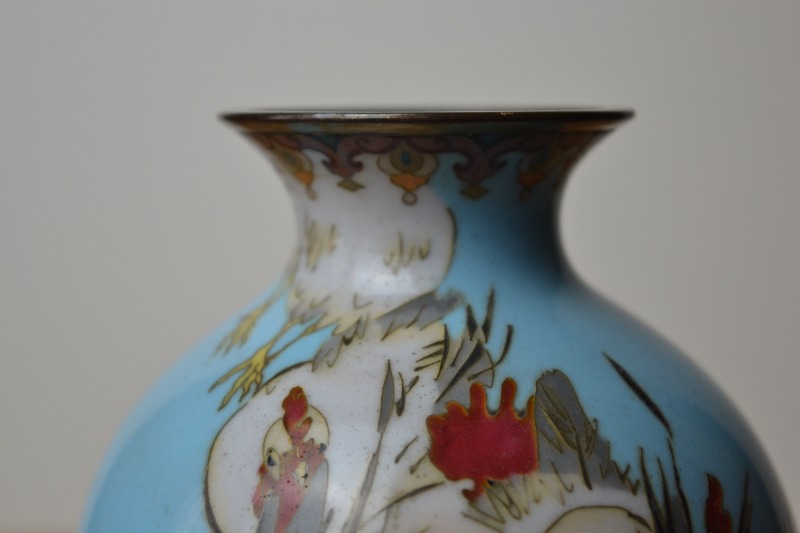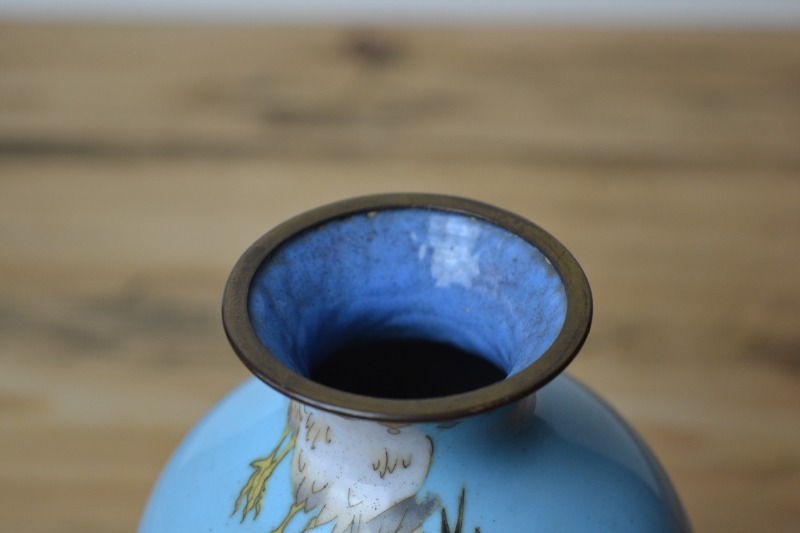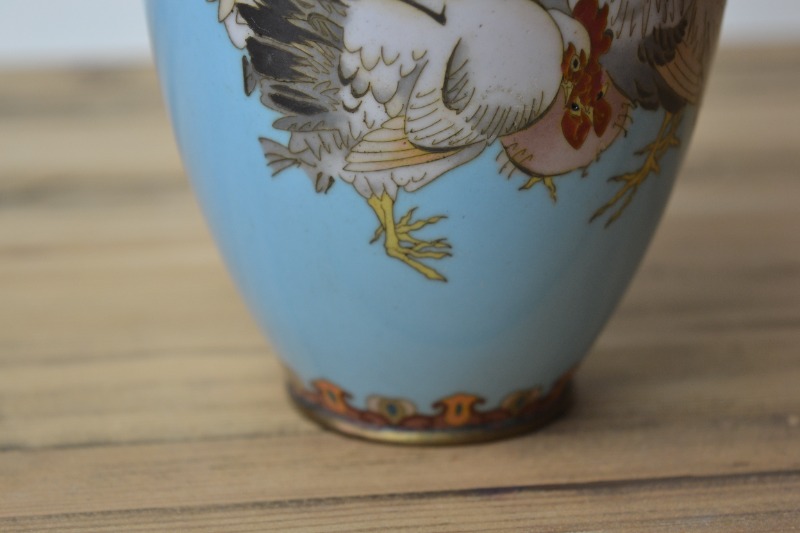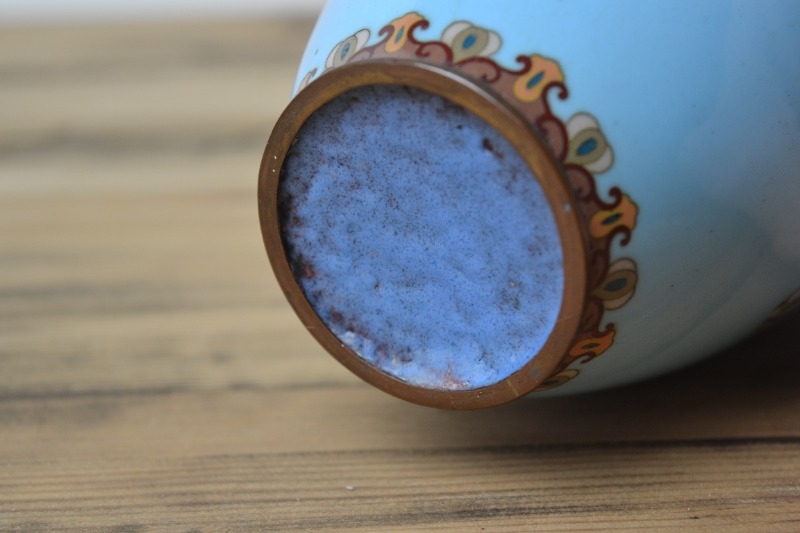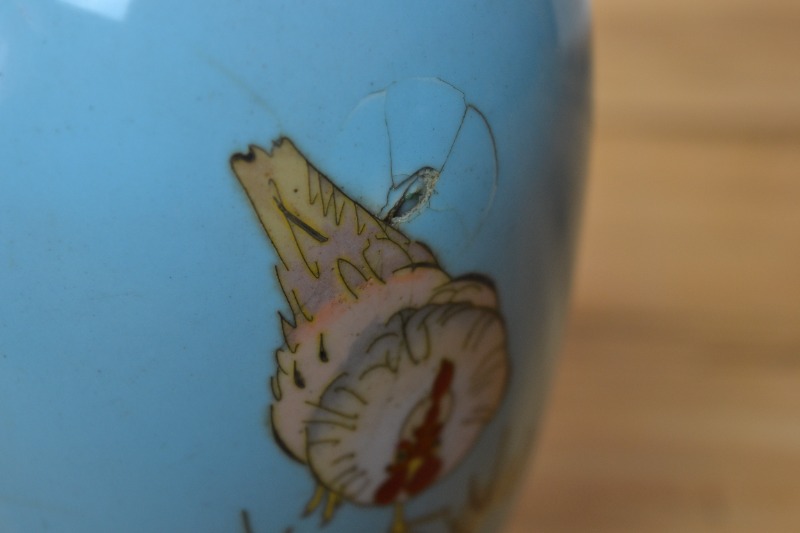Pair of Japanese Shippo Cloisonné Vases with Cockerels, School of Namikawa Sosuke, Imperial Household Artist, Meiji period, 1890-1910
Age:
1890-1910
Material:
Cloisonné
Dimensions:
Height: 19cm
Shipping:
Standard Parcel
Price:
SOLD
A fine pair of vases with a flock of cockerels on turquoise with a single cockerel to the back. Unsigned, but with the shippo or wireless technique developed by Namikawa Sosuke (1847–1910). Renowned for his bird and flower pictures, the wires, or cloisons, are used to pick out details or are otherwise done away with completely to give the depiction a distinctive painterly quality.
One vase is in perfect condition. The second has a 1 inch round crack at the back (see last pic) with a faint hairline to side.
Around 1880 Namikawa set up and ran the Tokyo branch of the Nagoya Cloisonné Company. His workshop was at the forefront of cloisonné techniques. With repeated firings, wires were not necessary to stop enamel areas bleeding into each other. He used two new techniques taking advantage of this: in shosen the wires are mostly burned out by sulphuric acid, leaving just fine details, while in musen the wires are removed entirely before the final firing. These vases make use of both.
Namikawa exhibited at the 1881 National Industrial Exposition in Tokyo where his works were shown in the Art section while all other cloisonné works were displayed in the Industrial section. He won awards at the 1885 Amsterdam Colonial and Export Trade Exhibition, the 1885 Nuremberg International Metalwork Exhibition and the Paris Exposition Universelle of 1889, winning a Grand Prize at the Louisiana Purchase Exposition of 1904. His work was also included in the Japan-British Exhibition held in London in 1910. In 1896 he was appointed an Imperial Household Artist, one of only two cloisonné artists ever to receive this award.

